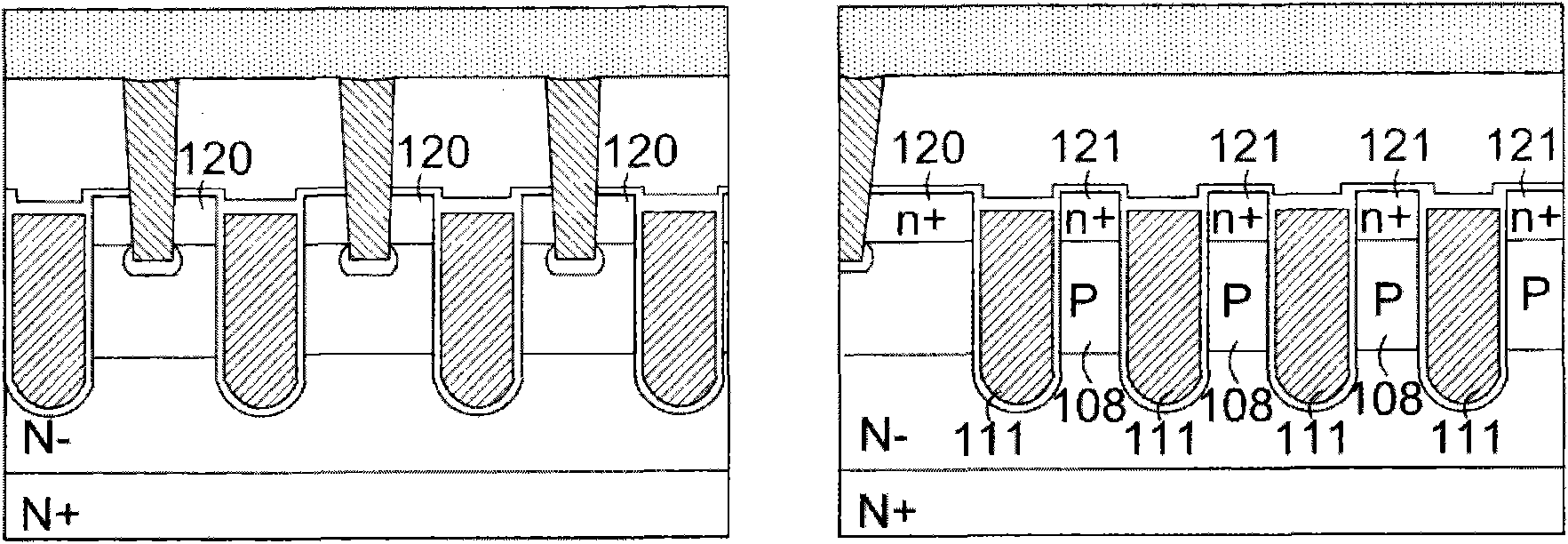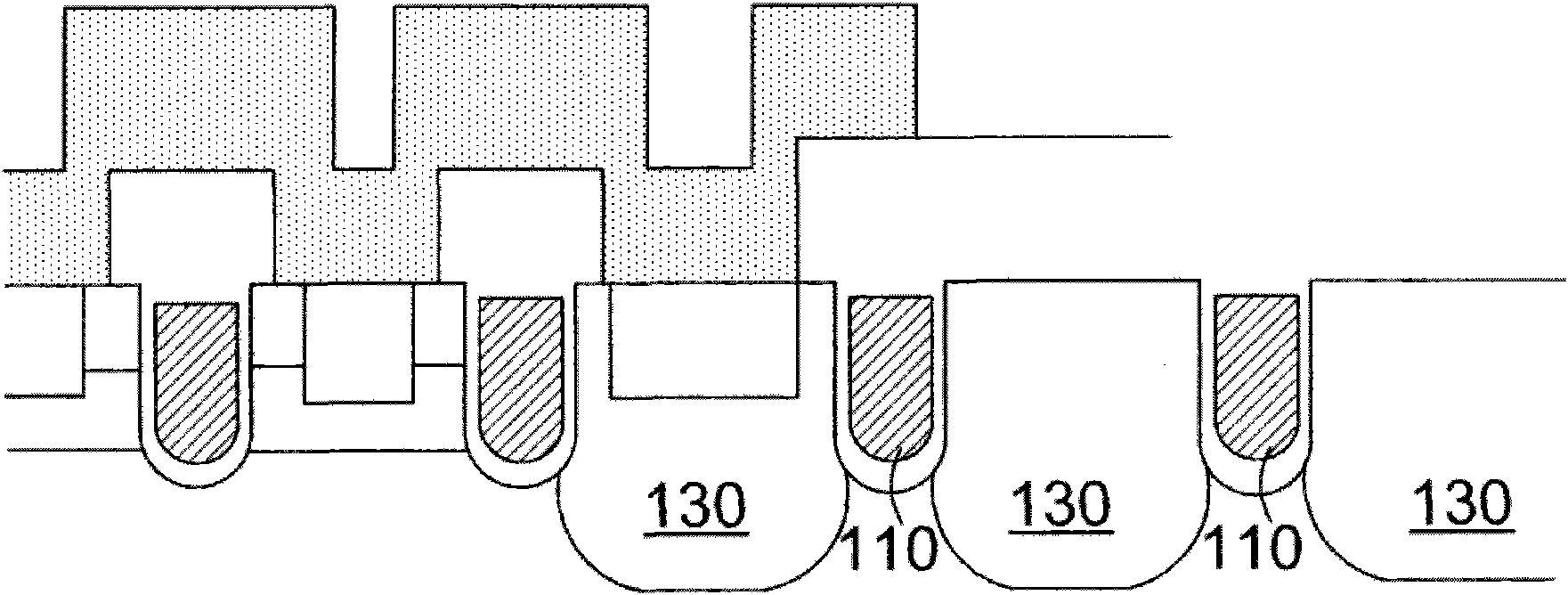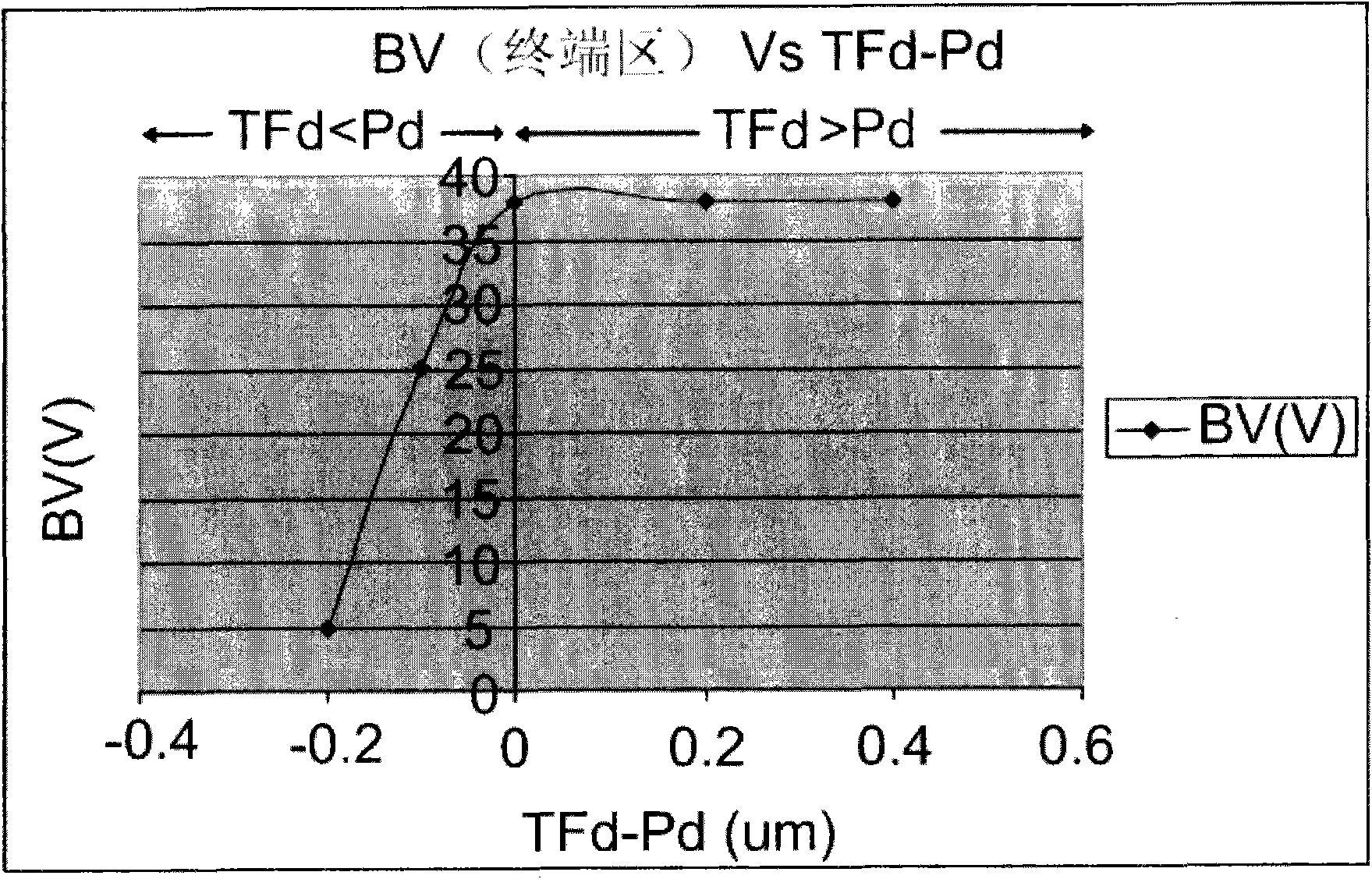Groove metal-oxide semiconductor field effect transistor and manufacture method thereof
An oxide semiconductor and field effect transistor technology, which is applied in semiconductor/solid-state device manufacturing, semiconductor devices, transistors, etc., can solve problems such as large leakage current, achieve high breakdown voltage, low gate leakage charge, and save production costs. Effect
- Summary
- Abstract
- Description
- Claims
- Application Information
AI Technical Summary
Problems solved by technology
Method used
Image
Examples
Embodiment Construction
[0068] The present invention will be described in detail below with reference to the drawings, in which preferred embodiments of the present invention are shown. The present invention can, but be embodied in different ways, but should not be limited to the embodiments described herein. For example, the description here refers more to N-channel trench MOSFETs, but it is obvious that other devices are also possible.
[0069] Reference image 3 As shown in a preferred embodiment of the present invention, the N-type epitaxial layer 202 is formed on the N+ substrate 200, and a drain metal 290 is deposited on the lower surface of the N+ substrate 200. In the N-type epitaxial layer 202, there are a plurality of first trench gates 210 located in the active area, at least one wider second trench gate 212 for gate connection, and at least three second trench gates located in the terminal area. Three trench gate 211. The inner surfaces of the first trench gate 210, the second trench gate ...
PUM
 Login to View More
Login to View More Abstract
Description
Claims
Application Information
 Login to View More
Login to View More - R&D
- Intellectual Property
- Life Sciences
- Materials
- Tech Scout
- Unparalleled Data Quality
- Higher Quality Content
- 60% Fewer Hallucinations
Browse by: Latest US Patents, China's latest patents, Technical Efficacy Thesaurus, Application Domain, Technology Topic, Popular Technical Reports.
© 2025 PatSnap. All rights reserved.Legal|Privacy policy|Modern Slavery Act Transparency Statement|Sitemap|About US| Contact US: help@patsnap.com



